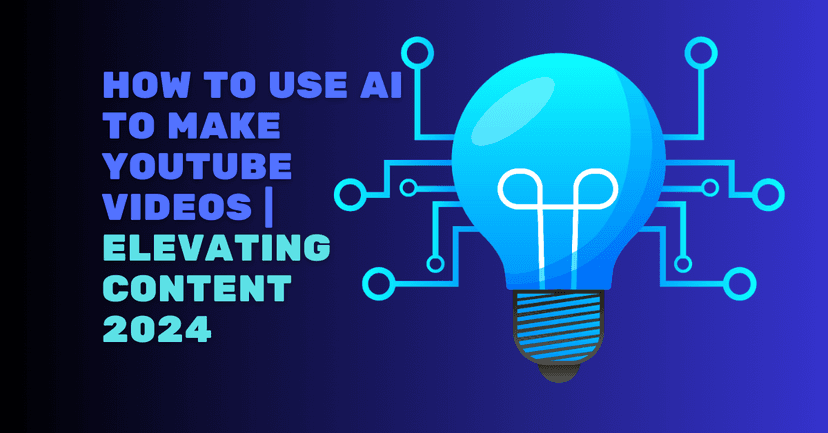Top 12 Tips on How to Use AI Avatars in Education
How do you maximize AI and AI avatars in your teaching-learning environment? Learn how to use AI avatars in education. Read this post today!
Interactive virtual characters are invading classrooms, skills labs, and other places of learning! They are knowledgeable virtual teachers, witty game masters, excellent motivators, and untiring assessors.
Role-play exercises, gamified learning content, and virtual worlds are more exciting to learners.
But how do you maximize AI and AI avatars in your teaching-learning environment?
Relax! We will share the top 12 tips on how to use AI avatars in education and make your teaching-learning journey more engaging and fruitful.
Sounds great? In that case, please read on.
12 Tips to Use AI Puppets in Education
1. Plan your lessons, especially the learning objectives.
All activities require a game plan, including e-learning courses or modules. Determine what you want learners to achieve after completing the instruction.
It might sound boring, but setting the objectives gives you a roadmap for designing the learning experience. It can also help you decide on learning methods and the best avatar type.
2. Research the ideal AI avatar for your learners.
Consider the avatar as a digital instructor or teacher. Like conventional learning environments, students have preferences as to how a teacher looks and behaves.
For instance, some like female trainers, while others want a hip-looking instructor.
Ask your audience about their AI avatar preferences, including gender, hair type, skin color, voice, language, and other character attributes.
Use the information to design an avatar that interests and motivates your students or audiences. You can try Puppetry’s avatar creator for this.
3. Design AI avatars as a guide for learners.
Create a script for avatars to guide audiences through the module or course.
This trick gives learners an overview of what to expect, including the course content, requirements, assessments, and other information.
For example, you can place the virtual trainer at the beginning of each lesson section to inform audiences about the key concepts or skills they will learn.
You’re giving audiences a heads-up, generating enthusiasm, and preparing them for the course.
4. Highlight the eLearning module’s essential aspects.
Some courses or modules have many vital concepts that learners might miss without an AI avatar drawing their attention.
Sometimes, the human brain can process information differently, making some misidentify a principle as insignificant.
You can place AI avatars, audio narration, or speech bubbles on pages with must-learn information.
This trick helps students learn better by making the content more easily digestible. It also appeals to learners across learning styles.
5. Assess learners’ knowledge.
AI avatars are excellent assessors and evaluators of learner progress.
You can program them to ask questions at each eLearning lesson's start, middle, and end to gauge student knowledge. It lets you determine how well audiences learn the information.
Alternatively, the avatar can pose questions now and then to keep new knowledge fresh. You could gamify quizzes and long tests to make them more fun while assessing knowledge retention.
6. Balance creativity with realism.
AI avatars must be fun and engaging yet possess realistic values or attributes that learners can relate to.
It could look whimsical, but its personality should still convey an air of confidence, authority, and credibility.
For example, your AI avatar could be a talking dog dressed in a business suit to convey an air of professionalism. The voice can be Darth Vader-like, not Donald Duck’s.
7. Offer helpful tips and timely advice.
Interactive virtual personalities feature robust AI, allowing them to learn people’s needs and preferences on the fly.
Such technology enables AI avatars to adapt, empowering them to offer helpful tips and timely advice.
For instance, the avatar might sense a learner is taking too much time answering a particular question. The digital instructor can offer hints or ask the audience if they need help.
8. Use different AI avatars for different learning roles.
Please avoid using a single AI avatar for all interactive learning courses or modules. Like in regular classrooms, we learn better from different teachers handling different subjects.
Check your topic and choose an AI avatar for it. You might have ten virtual teachers to cover ten topics or modules.
You can also create avatars for different teaching roles. A laboratory demonstrator will have a lab coat, while a college instructor-like avatar will have a coat.
9. Use an authoritative yet conversational tone.
Interactive virtual teachers and trainers must convey authority and credibility.
However, the tone should be friendly, too. You don’t want the avatar to sound too strict and formal. Otherwise, learners will not want to finish the course.
10. Choose relevant and relatable AI avatars.
You will want digital trainers that learners can relate to.
For example, teaching young kids the ABCs will be more effective if your avatar is Barney, Mickey, Donald, or a talking dog.
However, using these characters on adult learners might produce an unnecessary effect. They might see you as unprofessional.
So, be picky when choosing and designing AI avatars. You want them to be relatable and relevant to your students’ unique attributes.
For instance, you can use slang phrases and a Wall Street-looking guy when teaching yuppies about forex or capex.
11. Consider avatars as subject matter enhancers, not distractors.
Some teachers make the mistake of designing their avatars like celebrities. Please don’t.
These virtual tools are just that – instruments to get messages across. Hence, they should not hug the limelight. The learning content should!
The best e-learning avatars enhance subject learning and mastery. Although virtual characters can be fun, they must not distract students from learning and make them wander off the learning goals.
12. Make eLearning content mobile-friendly.
Three in five people have a smartphone. Millions more have other mobile devices like laptops and tablets. Teachers might want to make their e-learning content accessible to these technologies.
For example, some students might find classrooms too restrictive and cliché. They might prefer reading lessons and watching e-learning videos on the go (i.e., on the train, bus, at the park, or anywhere).
The point is to use AI avatars that learners can access from their mobile devices. It’s like having a teacher on standby.
Effectiveness of AI Avatars in Education
Research shows that AI avatars in higher learning effectively personalize learning experiences, address diverse learner needs, and enhance student engagement.
Although data privacy concerns and ethical considerations exist, case studies point to one inescapable conclusion – artificial intelligence-generated avatars can transform the teaching-learning landscape.
So, are AI avatars effective in education? Yes, they are! These technologies create an inclusive, engaging, and adaptive environment for learners to thrive. It doesn’t only redefine education, but AI also reinvents it.
Advantages and Benefits of AI Avatars in Education
AI-generated virtual teachers transform the learning landscape into a fun, engaging, adaptive, and inclusive environment. But what benefits and advantages can you, as teachers, trainers, and instructors, derive from such technologies? Let’s count the ways.
-
Better personalization of learning experiences–You can generate an AI avatar specific to each learner or group of students. For example, Puppetry lets you create an avatar with unique attributes. You can use these virtual teachers to customize learning experiences.
-
Higher learner engagement– What if you could turn a cat or dog portrait into a talking character? Learners will love it. You can command AI to produce funny faces and other facial expressions to keep your students interested and engaged.
-
More flexible delivery of learning content–AI lets you update eLearning modules more efficiently than conventional methods. And with Puppetry’s help, your new video lesson will be ready in minutes. You can do that anywhere, too.
-
More accessible learning content– Your learners can learn the materials conveniently. You can create video and audio lessons from text, allowing learners to choose the learning mode. After all, some prefer listening to watching, and vice versa.
-
Cost-effective eLearning video creation– Animating AI avatars is easier and more affordable than conventional video production. You will never worry about expensive professional equipment and complex video editing skills.
AI Avatar Use Cases in eLearning
Learning how to use AI avatars in eLearning is one thing. Applying the concepts in real life is another matter. The following use cases show how the real world integrates digital characters into learning programs.
-
Onboarding programs – New employees need a period to transition from their previous roles to their current ones. Avatars for onboarding programs can guide new workers through the initial training stages, answer queries, and deliver real-time support.
-
Language learning – Avatars have advanced natural language processing, teaching learners different languages and dialects by simulating real-world conversations.
-
Technical skills– Digital trainers can provide step-by-step guidance to learners, allowing them to master complex technical tasks and produce credible outcomes.
-
Soft skills– Learning and mastering customer service, conflict resolution, negotiation or bargaining, interpersonal communication, and other soft skills are more fun with virtual teachers.
-
Assessments– Formative tests, quizzes, and other evaluations of learner progress are more credible with AI-powered avatars. These digital instructors can deliver instant feedback and advice for learner improvement.
-
Children’s education– Kids learn more with fun games and interactive stories. Avatars of children’s favorite characters can make kids’ learning more engaging.
-
Compliance training– Complying with regulations starts with an in-depth understanding of concepts. Avatars can facilitate better comprehension by making the learning activity more fun.
-
Continuing education– Adult learners don’t need to ditch their work to improve their professional competencies. Avatars can deliver learning resources and facilitate up-to-date tutorials to help people learn conveniently.
-
Presentations – Avatars can be instructors using a PowerPoint presentation to highlight a point.
-
Health and safety training– Patient education is integral to healthcare. It equips patients and their loved ones with skills, attitudes, and knowledge to care for their health. Avatars can facilitate such learning.
-
Explainer videos– Some concepts are too abstract for some people to grasp. Avatars can make learning ideas, principles, systems, and processes more efficient than traditional instructors.
Frequently Asked Questions
Why use avatars in education?
Avatars make teaching and learning more efficient.
These digital creations have phenomenal AI capabilities, allowing them to learn each student’s strengths and weaknesses and provide insights to instructors on how best to support or help learners.
Virtual interactive characters continuously adapt to student needs, gauge emotional responses, and respond to questions like teachers.
Avatars ensure a more personalized learning journey even though they are ‘robots.’
What’s the role of AI in education?
Artificial intelligence is an essential tool for teachers and learners, allowing the latter to receive personalized feedback while teachers can automate repetitive tasks.
The technology can identify learning gaps, enabling instructors to devise a comprehensive plan to help struggling students.
Conclusion
AI avatars are transforming how we discover new things, learn new skills, and foster healthier attitudes. And they’re here to stay.
The 12 tips we shared should help you maximize AI technology's advantages and benefits, allowing you to shape your learners’ future.
Related Articles
Discover more insights and expand your knowledge with these hand-picked articles

Boost Views, Comments, and Likes: 7 Expert Tips on How to Increase Engagement on YouTube
Discover the secrets to YouTube success with these seven expert tips to boost engagement. Master the art of increasing views, comments, likes, and shares, while building a subscriber base.

A Beginner’s Guide on How to Create How-To Videos 2024
Here’s a beginner’s guide on how to create how-to videos. Learn the steps and leverage these videos’ expansive viewership. Check this out today!

How to Use AI to Make YouTube Videos: Elevating Content 2024
Creating YouTube videos was time-consuming and expensive. But maybe not anymore! So, if you want to learn how to use AI to make YouTube videos, read here!
Ready to Create Amazing Content?
Join thousands of creators who use Puppetry to bring their ideas to life. Start creating engaging content today with our AI-powered platform.